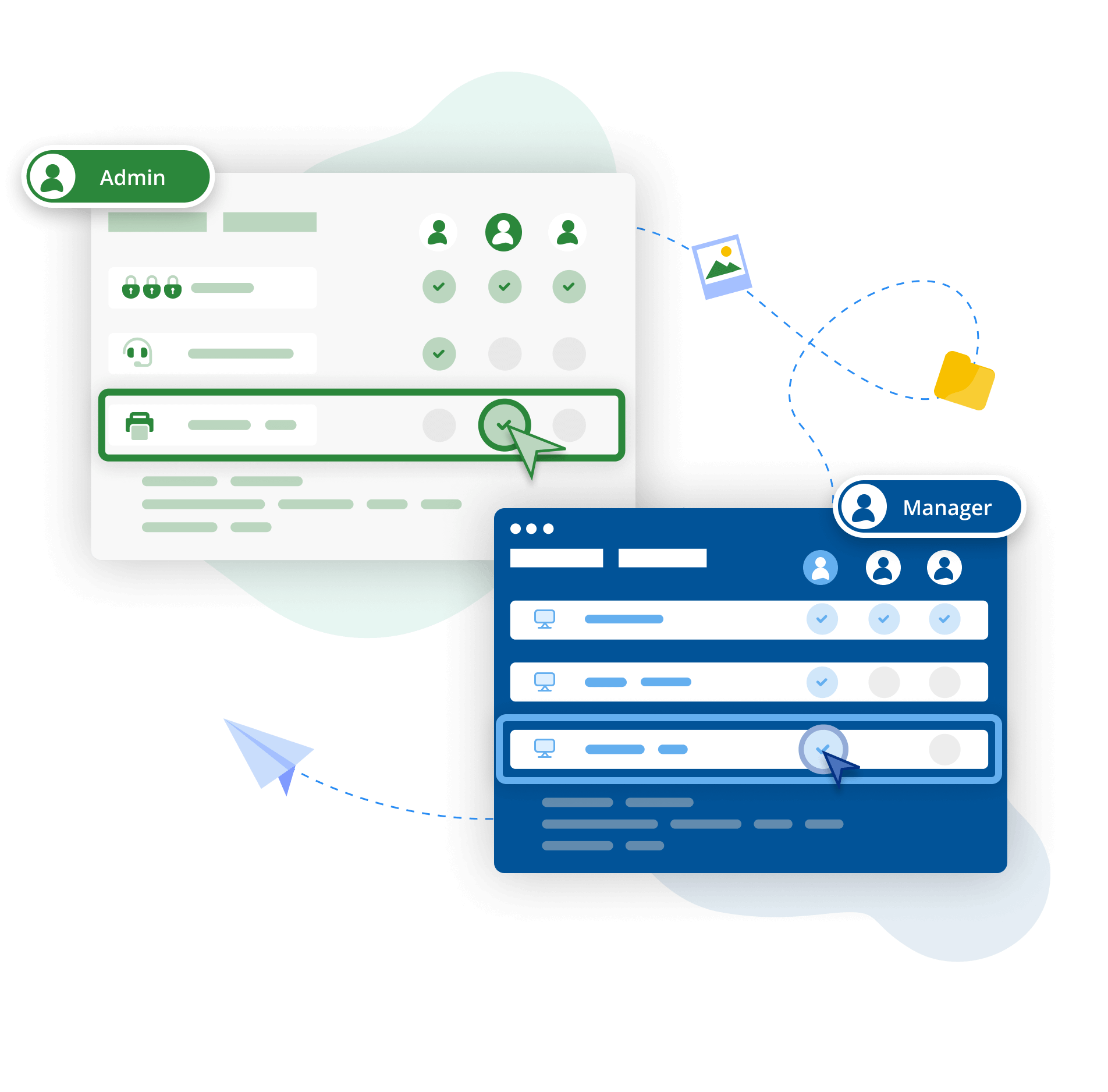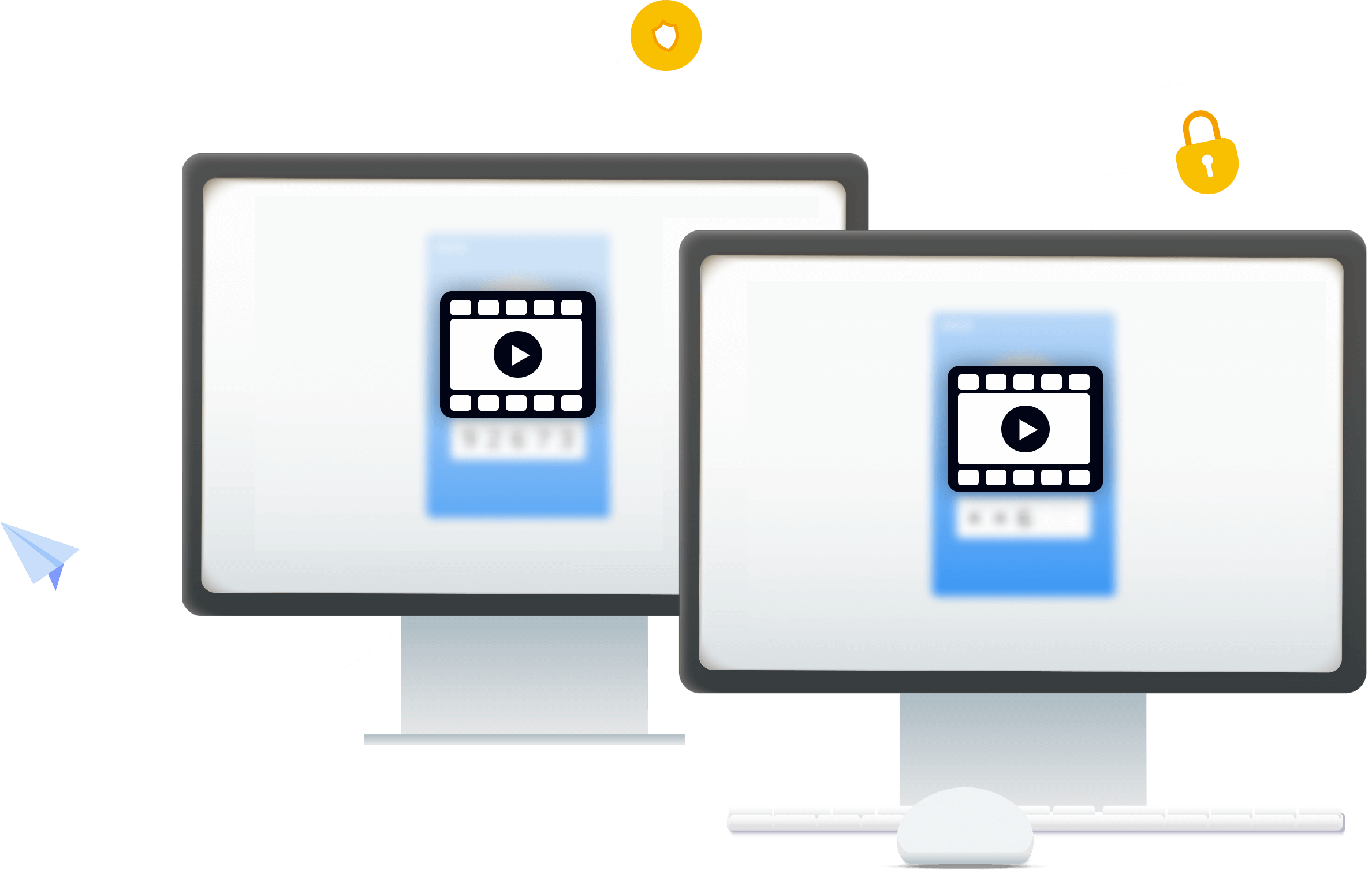How To Securely Access IoT Devices Via VNC: Your Ultimate Guide
So, here we are, diving straight into the world of IoT devices and VNC access. Let's be real for a second—if you're reading this, chances are you're either trying to figure out how to remotely access your IoT devices using VNC or you're just plain curious about the whole concept. Well, buckle up because we're about to break it down in a way that's both easy to understand and packed with actionable insights. Accessing IoT devices via VNC is not rocket science, but it does require some understanding of the tech behind it.
You see, IoT devices are everywhere these days—from smart thermostats to security cameras, and even your fancy coffee maker. But what happens when you need to control these devices remotely? That's where VNC comes in, acting like a digital bridge that lets you access your IoT setup from anywhere in the world. Cool, right? But hold on, there's more to it than just setting it up and hoping for the best.
Now, before we dive deeper, let me drop a quick truth bomb: security is a huge deal when it comes to accessing IoT devices via VNC. We're talking about protecting your personal data, ensuring privacy, and avoiding potential breaches. So, as we explore this topic, we'll also be covering best practices to keep your setup safe and sound. Stick around because this is going to be a wild ride.
- Cris Clerigo Net Worth Unveiling The Success Story Of A Rising Star
- Mckinley Richardson Onlyfans Leak Naked The Truth Behind The Controversy
What is VNC and How Does It Work?
Alright, let's start with the basics. VNC, or Virtual Network Computing, is like a remote control for your computer or IoT device. It allows you to access and control another machine over the internet as if you were sitting right in front of it. Think of it as a digital handshake that lets you see the screen, move the mouse, and type on the keyboard of a remote device.
Here's how it works: VNC uses a client-server model. The device you want to control (your IoT device) acts as the server, while the machine you're using to access it (your laptop or phone) acts as the client. The two communicate through a network protocol, and voilà—you're in control. Simple enough, right? But there's a catch: not all VNC setups are created equal, especially when it comes to IoT devices.
Why Use VNC for IoT Devices?
Now, you might be wondering why VNC is such a popular choice for IoT device access. The answer lies in its simplicity and versatility. Unlike other remote access tools, VNC doesn't require a ton of technical knowledge to set up. Plus, it works across different platforms, making it a go-to solution for many users.
- Nikki Velayo Telegram The Ultimate Guide To Her Journey Influence And Impact
- How Many Kids Does Aaron Donald Have Unveiling The Personal Life Of An Nfl Legend
Here are a few reasons why VNC is a game-changer for IoT enthusiasts:
- Remote Control: Access your IoT devices from anywhere in the world.
- Real-Time Interaction: See exactly what's happening on your device in real-time.
- Platform Independence: Works on Windows, macOS, Linux, Android, and iOS.
- Cost-Effective: Many VNC solutions are free or come at a minimal cost.
Setting Up VNC for IoT Devices: Step-by-Step
Ready to get your hands dirty? Setting up VNC for your IoT devices isn't as complicated as it sounds. Follow these steps, and you'll be good to go:
- Install a VNC Server: First things first, you need to install a VNC server on your IoT device. Popular options include RealVNC and TightVNC.
- Configure the Server: Set up the server to allow remote connections. Make sure to create a strong password to keep unauthorized users out.
- Install a VNC Client: Next, download and install a VNC client on the device you'll use to access your IoT setup. There are tons of apps available for both desktop and mobile platforms.
- Connect to Your Device: Enter the IP address of your IoT device into the VNC client and hit connect. If everything is set up correctly, you should now have full control over your device.
Common Challenges and Solutions
While setting up VNC for IoT devices is relatively straightforward, you might run into a few hiccups along the way. Here are some common challenges and how to overcome them:
- Connection Issues: If you're having trouble connecting, double-check the IP address and ensure that the VNC server is running on your IoT device.
- Slow Performance: A slow connection can be frustrating. Try adjusting the resolution settings in your VNC client or switching to a faster internet connection.
- Security Concerns: Always use encryption and strong passwords to protect your VNC setup. Consider setting up a firewall to add an extra layer of security.
Security Best Practices for VNC Access
Security should always be top of mind when accessing IoT devices via VNC. Here are some best practices to keep your setup safe:
- Use Strong Passwords: Avoid using simple or easily guessable passwords. Mix uppercase and lowercase letters, numbers, and symbols for maximum security.
- Enable Encryption: Most VNC tools offer encryption options. Make sure to enable them to protect your data during transmission.
- Regularly Update Software: Keep both your VNC server and client software up to date to patch any security vulnerabilities.
- Limit Access: Restrict VNC access to only the devices and users that need it. This minimizes the risk of unauthorized access.
Understanding VNC Protocols
VNC uses a protocol called RFB (Remote Framebuffer) to transmit data between the server and client. While this protocol is reliable, it doesn't come with built-in encryption. That's why it's crucial to use additional security measures, such as SSH tunneling or a secure VNC client, to safeguard your connection.
Choosing the Right VNC Tool for IoT Devices
Not all VNC tools are created equal, especially when it comes to IoT devices. Here are a few popular options to consider:
- RealVNC: A widely used VNC solution that offers both free and paid versions. Known for its ease of use and robust feature set.
- TightVNC: An open-source VNC tool that's lightweight and perfect for resource-constrained IoT devices.
- UltraVNC: Another popular choice that offers advanced features like file transfer and video playback.
Factors to Consider When Choosing a VNC Tool
When selecting a VNC tool for your IoT devices, keep the following factors in mind:
- Compatibility: Ensure the tool supports your IoT device's operating system and hardware.
- Performance: Look for a tool that offers smooth performance even on slower connections.
- Security Features: Prioritize tools with strong encryption and authentication options.
Real-World Applications of VNC for IoT Devices
So, how exactly can you use VNC to enhance your IoT setup? Here are a few real-world applications:
- Remote Monitoring: Use VNC to monitor security cameras or environmental sensors from anywhere in the world.
- Device Management: Manage multiple IoT devices from a single dashboard, streamlining your workflow.
- Software Updates: Remotely install updates or troubleshoot issues on your IoT devices without needing physical access.
Case Studies: Successful VNC Implementations
Let's take a look at a couple of real-world examples where VNC has been successfully implemented for IoT devices:
Case Study 1: A small business used VNC to remotely manage their fleet of smart thermostats, reducing energy costs and improving efficiency.
Case Study 2: A homeowner installed VNC on their security camera system, allowing them to monitor their property while on vacation.
Troubleshooting Tips for VNC Access
Even the best-laid plans can go awry. If you're having trouble with your VNC setup, here are a few troubleshooting tips:
- Check Network Connectivity: Ensure both your IoT device and VNC client are connected to the internet.
- Verify Firewall Settings: Make sure your firewall isn't blocking VNC traffic.
- Restart the VNC Server: Sometimes, a simple restart can resolve connectivity issues.
Advanced VNC Configurations
For those looking to take their VNC setup to the next level, here are a few advanced configurations to consider:
- SSH Tunneling: Use SSH to encrypt your VNC connection for added security.
- Port Forwarding: Set up port forwarding on your router to allow external access to your VNC server.
- Custom Resolutions: Adjust the resolution settings in your VNC client to optimize performance for specific devices.
Future Trends in VNC for IoT Devices
As technology continues to evolve, so too does the landscape of VNC for IoT devices. Here are a few trends to watch out for:
- Increased Security: Expect to see more advanced encryption and authentication methods in future VNC tools.
- Cloud Integration: Cloud-based VNC solutions are becoming more popular, offering greater flexibility and scalability.
- AI-Powered Features: AI-driven tools may soon enhance VNC functionality, providing smarter and more efficient remote access solutions.
Conclusion: Taking Control of Your IoT Devices
Accessing IoT devices via VNC is a powerful way to take control of your smart home or business setup. By following the steps outlined in this guide, you can set up a secure and reliable VNC connection that meets your needs. Remember to prioritize security, choose the right tools, and stay updated on the latest trends in the industry.
So, what are you waiting for? Dive into the world of VNC and unlock the full potential of your IoT devices. And don't forget to share your experiences in the comments below or explore other articles on our site for more tech insights.
Table of Contents
- What is VNC and How Does It Work?
- Why Use VNC for IoT Devices?
- Setting Up VNC for IoT Devices: Step-by-Step
- Common Challenges and Solutions
- Security Best Practices for VNC Access
- Understanding VNC Protocols
- Choosing the Right VNC Tool for IoT Devices
- Factors to Consider When Choosing a VNC Tool
- Real-World Applications of VNC for IoT Devices
- Case Studies: Successful VNC Implementations
- Troubleshooting Tips for VNC Access
- Advanced VNC Configurations
- Future Trends in VNC for IoT Devices
- Conclusion: Taking Control of Your IoT Devices



Detail Author:
- Name : Jaden Upton
- Username : justine38
- Email : corbin53@hotmail.com
- Birthdate : 1973-01-14
- Address : 83965 Shakira Junctions Apt. 454 Lake Elenora, WY 31329
- Phone : +1 (773) 590-0248
- Company : Sporer, McLaughlin and Hansen
- Job : Forestry Conservation Science Teacher
- Bio : Commodi et in optio nihil. Delectus ipsum eos ipsum ullam. Ex aut ut facere et cum voluptatem culpa. Consectetur quis provident aspernatur et.
Socials
tiktok:
- url : https://tiktok.com/@elouise1882
- username : elouise1882
- bio : Similique optio et tenetur eum dolores voluptas ut. Aut est autem labore ipsa.
- followers : 132
- following : 2166
instagram:
- url : https://instagram.com/elouise_huels
- username : elouise_huels
- bio : Sequi qui cupiditate non itaque et. Placeat sit voluptas magni id et dolore.
- followers : 5435
- following : 1749
twitter:
- url : https://twitter.com/elouisehuels
- username : elouisehuels
- bio : Est magni sequi vero rerum. Distinctio delectus eum incidunt cupiditate perferendis accusantium voluptatem. Architecto inventore cum aperiam.
- followers : 2764
- following : 1909
linkedin:
- url : https://linkedin.com/in/huels1993
- username : huels1993
- bio : Facere qui eaque in et.
- followers : 898
- following : 39